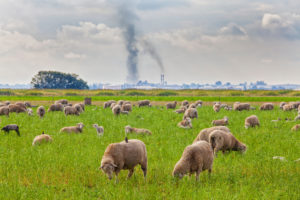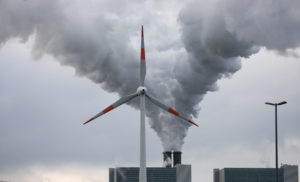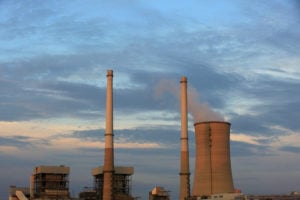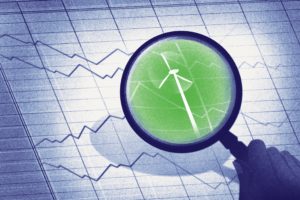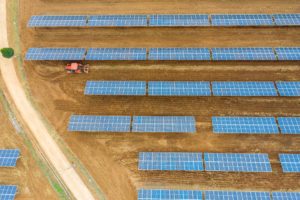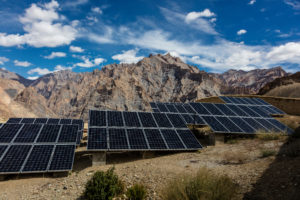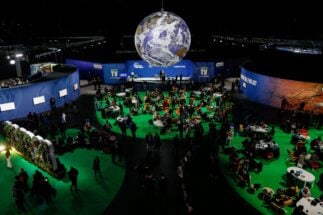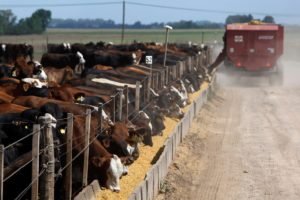Countries usually do not act alone at climate negotiations: they act in blocs. These groups present specific interests, and therefore can be composed of countries from multiple regions. During negotiations, a group of countries will jointly support certain policies, targets or points of view. The blocs often overlap, and their shifting as well as relatively constant positions can be confusing.
Almost every country is a member of more than one bloc, and some countries have changed blocs since climate negotiations started in the 1990s.
Understanding these blocs helps with comprehending the dynamics of negotiations under the United Nations Framework Convention on Climate Change (UNFCCC).
Umbrella Group
This is a group of mostly developed countries, with some middle-income economies too. Large industrialised countries that are high-carbon emitters like the United States, Australia and Canada are an integral part of the Umbrella Group. The group has maintained that the greenhouse gas emission reductions needed to keep global temperature rise within 2C – preferably within 1.5C – as per the Paris Agreement must come from all countries, including developing countries.
Further, the group – which includes the world’s second-largest emitter, the US – maintains that the stringency of reporting and accounting for emissions should be the same for all countries. This group does not believe that the difference between Annex I (developed) and Non-Annex I (developing) countries created by the Kyoto Protocol should exist. It holds that responsibility for reducing emissions ought to be determined based on current rather than historical emissions.
One contentious issue is that economies that are currently high emitters like China (the world’s largest) or India (fourth largest) only started emitting CO2 relatively recently as they industrialised. These countries argue that developed countries have monopolised the carbon budget, with the US responsible for about 25% of all CO2 emissions since 1750, and the EU countries for 22%, though they have only around 20% of the world’s population.
European Union
The European Union conducts climate negotiations as a group. It also reports its greenhouse gas emissions as a group to the UNFCCC, making the EU the world’s third-largest emitter, after China and the US. Through commitments to become climate neutral by 2050 (the so-called net-zero commitment), the EU has been a leader in many ways when it comes to combating climate change. But its commitment to provide climate finance to developing countries has been muddled due to lack of transparency and alleged counting of aid money as climate finance. The group has maintained that emerging economies should commit to absolute emission reductions.
BASIC Group
This group was formed as a reaction to the increasing pressure on the emerging economies of Brazil, South Africa, India and China to control their emissions.
Of the four, South Africa has declared 2050 as its net-zero year – the year by which it will not emit more greenhouse gases than it removes from the atmosphere. China has declared 2060 as its net-zero year; Brazil has said it can reach net zero by 2060 if it gets the money it expects from industrialised countries. The pressure is now on India to declare a net-zero year, though it is likely to instead declare a goal of generating 450 GW of energy through renewable sources by 2030.
The BASIC Group is spearheading the demand for more financial transfers from industrialised countries. It has publicly maintained that the rich nations, which have placed over 80% of the extra greenhouse gases in the atmosphere since the start of the industrial age, must take the lead in emission reductions.
The main thrust of the group is to put on the agenda the issues of equity and access to carbon space for development. India, with its low per-capita emissions, leads on this demand. But the countries have so far failed to provide any operational guidelines on the equity question. South Africa put forward the idea of an equity reference framework. This is meant to analyse the nationally determined contributions (NDCs) of each country relative to the global pledge and to the NDCs of all other countries – in other words, which country is doing better or worse than its fair share.
Nationally determined contributions are non-binding commitments by each country on how they will reduce their carbon emissions and to what extent. The NDCs are a critical part of the Paris Agreement, designed to keep global warming below 2C from pre-industrial levels, and ideally below 1.5C, although they currently do not meet these goals.
Brazil put forward the idea of concentric circles – with economy-wide absolute emission targets at its core for developed countries, and less stringent ones for developing countries. But these ideas did not get support from China or India, let alone countries outside the BASIC Group.
The main force binding the group has been collective defence against the emission-reduction demands of developed countries and some developing country groups.
LMDC Group
The Like-Minded Developing Countries (LMDC) Group is a shifting band of more than 20 countries, which has been seen as a stumbling block by many others. The main demand of the LMDC Group is to maintain the differentiation between developed and developing countries. It asks developed countries to meet the commitments they have made, without necessarily spelling out the actions to be taken by developing countries. China, India and oil-exporting countries like Saudi Arabia are all in the group.
Just a few days before COP26, the LMDC Group came out openly against the net-zero goal being pushed by rich nations. “Demands for ‘net zero’ emissions for all countries by 2050 will exacerbate further the existing inequities between developed and developing countries,” it said in a joint statement after a meeting on 18 October chaired by Bolivia. Ministers and officials from China, Cuba, Ecuador, India, Iran, Pakistan, Saudi Arabia, Qatar, Venezuela and Vietnam attended the virtual meeting. “This new ‘goal’ which is being advanced runs counter to the Paris Agreement and is anti-equity and against climate justice,” the statement added.
Cartagena Dialogue
This group includes countries from the Umbrella Group, and the Least Developed Countries (LDC) and Small Island Developing States (SIDS) groups. Its position is usually a nuanced variant of the EU position, and it does not have a very strong stance on sticky issues such as climate finance and emission-reduction commitments. Its main objective over the years has been to propose innovative ideas that sometimes extend the interpretation of the UNFCCC. This is seen by observers as a softened position compared with that of the Umbrella Group. In recent years, the group has maintained that emerging economies must make higher emission cuts.
Environmental Integrity Group
This group contains Mexico, Liechtenstein, Monaco, South Korea, Georgia and Switzerland, which is its most frequent spokesperson. It often takes up positions close to the Umbrella Group; it is strongest when demanding that emission reductions in developing countries must be independently verified by international auditors. This has placed the group in opposition to many developing countries more than once.
G-77 and China
The G-77 and China includes all developing countries, with the number of members now well above the original 77. It is a fairly amorphous group with lots of differences among its members. But it has stuck to a common position on critical issues such as the need for climate finance from rich nations. Apart from that, various countries and blocs within the group often articulate differences on specific issues.
African Group
This, one of the largest blocs within the G-77 and China Group, consists of developing countries from Africa. In recent years, it has played an important role in keeping the 2C limit in focus, when that was in danger of falling off the table. The bloc is one of the strongest in asking for stringent action from developed countries and seeking finances to combat climate change. It aligns itself with the G-77 and China Group on most issues.
ALBA
In many ways, this is the group most stridently opposed to the Umbrella Group. The ALBA Group is most vociferous in demanding emissions reductions from developed countries, while not pledging anything from the developing countries it comprises. The group – formally called the Bolivarian Alliance for the Peoples of Our America – has nine member countries, though the most vocal during climate negotiations are Venezuela, Bolivia, Cuba and Ecuador. During the 2009 Copenhagen climate summit, this group was catalytic in the breakdown of a formal agreement in the wake of backdoor negotiations between the US and the BASIC Group. Its delegates repeatedly pointed out in an open plenary session the weaknesses of the behind-the-scenes agreement.
AOSIS and SIDS
The Alliance of Small Island States (AOSIS) has always had a strong presence in climate negotiations, pointing out that the survival of their countries is at stake as sea levels rise due to global warming. The group was instrumental in making the 1.5C ceiling an aspirational goal in the Paris Agreement. At times the AOSIS Group has aligned with the EU to push for stronger emissions-reduction action by all countries, and has thus found itself opposing the emerging economies in the BASIC Group. The Small Island Developing States (SIDS) coalition often takes the same position as AOSIS in climate negotiations.
LDC Group
The 48 countries defined by the UN as Least Developed Countries (LDCs) make up this group, which is now being chaired by Bhutan. This group has been most vocal in seeking capacity building for its people so that they can handle climate change impacts; it has also sought compensation for the loss and damage these countries are suffering due to climate change impacts such as floods, storms and droughts. The LDC Group is part of the larger G-77 and China Group, but sometimes takes positions contrary to those of emerging economies and oil-exporting countries.
Arab States
Oil-exporting countries are often the most vocal members of this 22-nation group. As a result, NGOs and observers often see this group as blocking progress against climate change. With group members such as Dubai moving aggressively towards renewable energy, the group may possibly alter its stance somewhat.
Allied for Climate Transformation by 2025 (ACT2025)
This relatively new group includes Bangladesh, the Philippines, Nigeria, Kenya, Colombia and several countries in the Caribbean and the Pacific. Many members are vocal in demanding that emerging economies take a larger share of emission-reduction commitments.
This article was originally published on The Third Pole.


